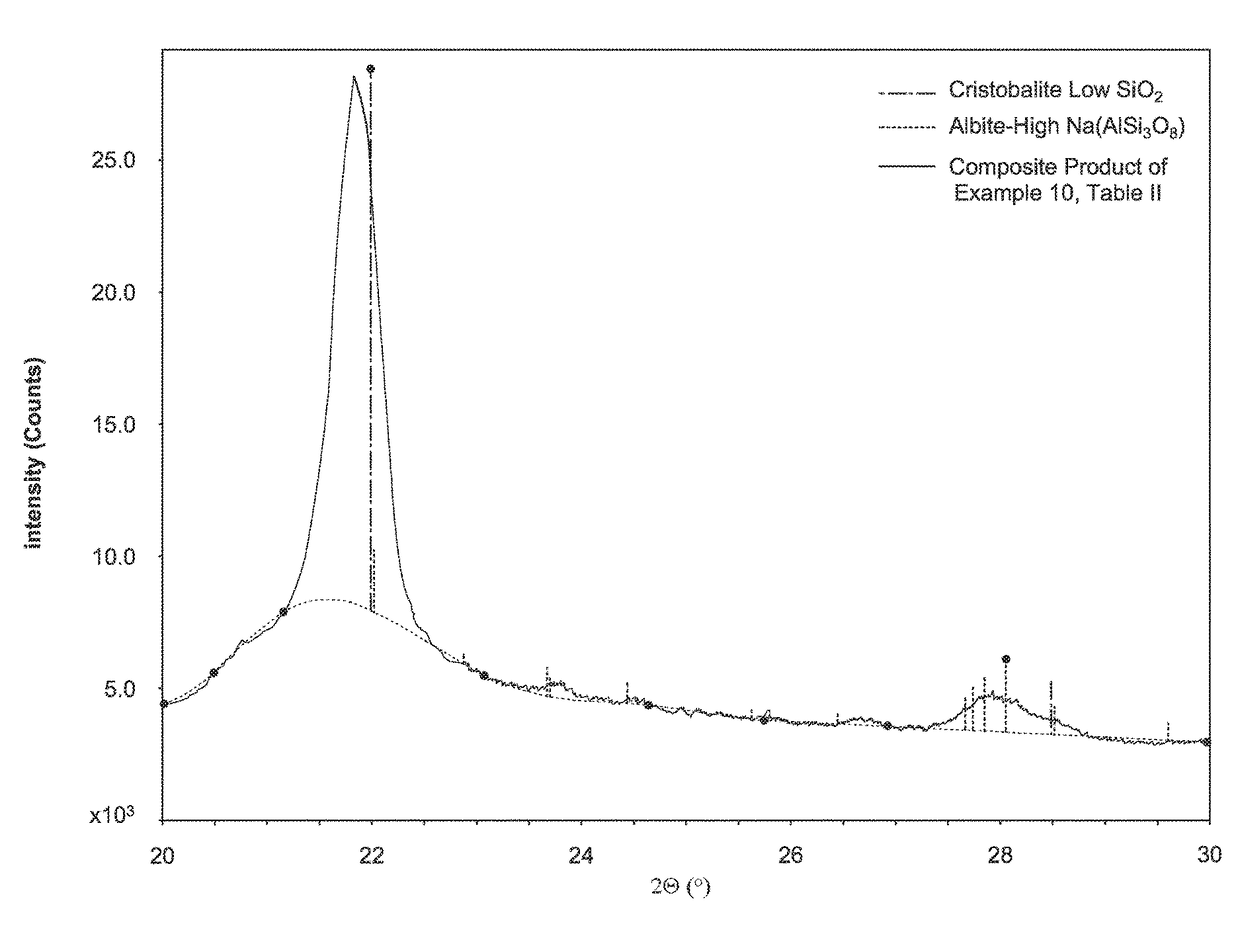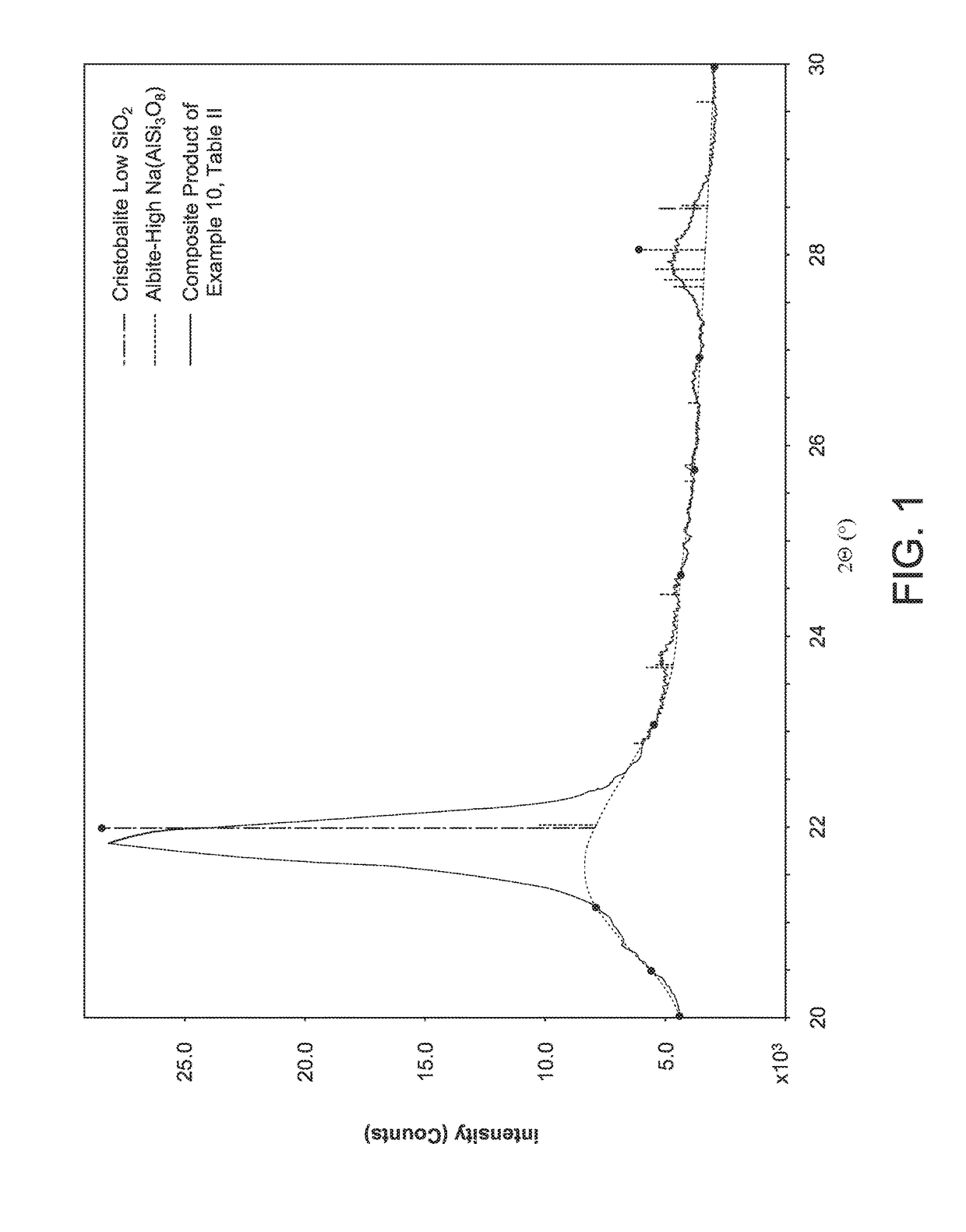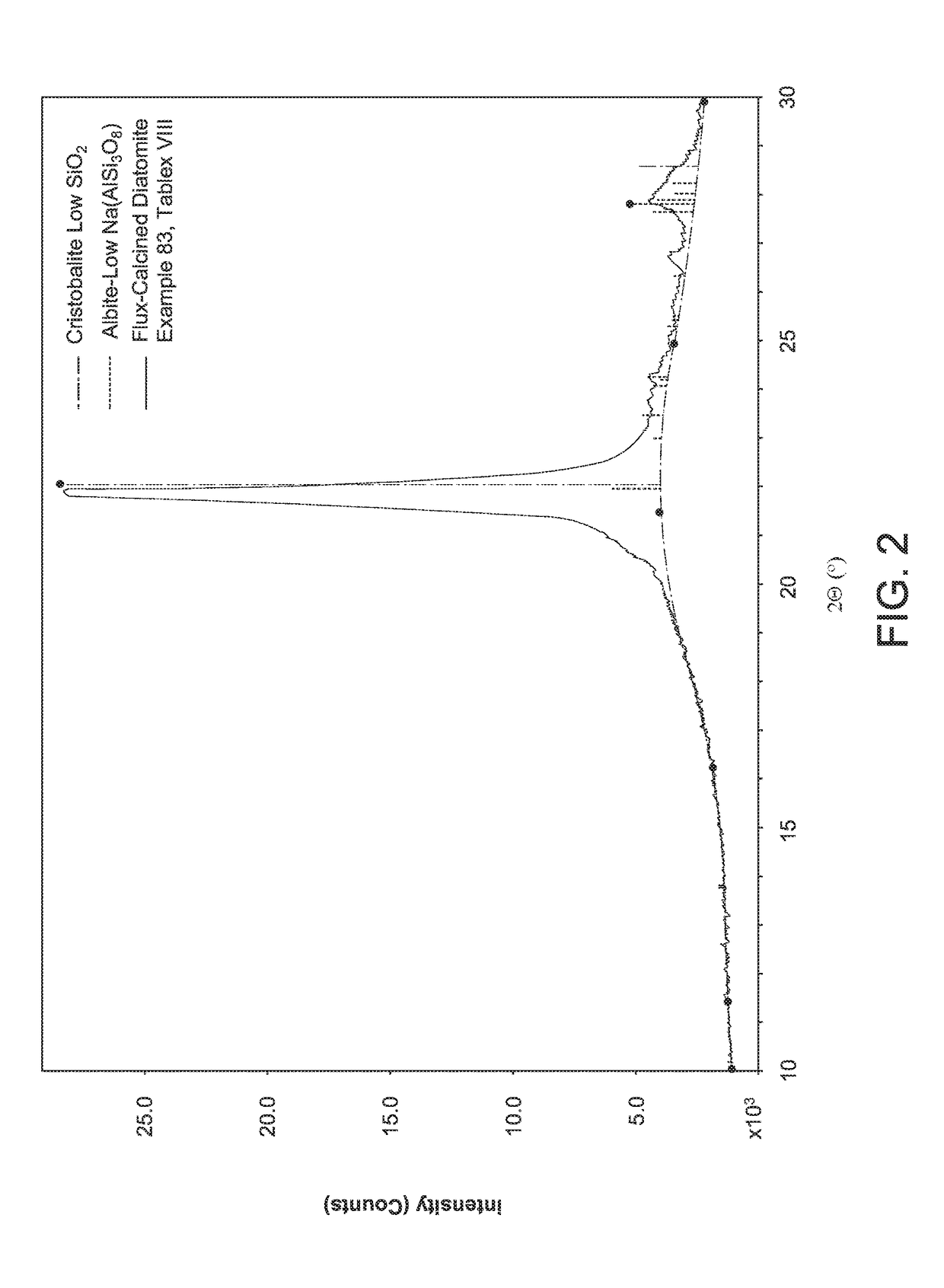As a result, diatomite raw materials that are either used as natural products or as feed for further
processing contain a mineral
system, not just the pure
diatom frustules, and the existence of this mineral
system places constraints on many of the properties, such as extractable
chemistry, density, permeability and
mineralogy, including crystalline silica content.
While the removal of some non-
diatom-derived minerals can improve some product properties, such as extractable
chemistry and density, it can also have a negative
impact on some other properties, such as permeability, as some of the other minerals often found with diatomite can aid in the agglomeration of particles during
calcination and flux
calcination.
These enclosed spheres are referred to as “floaters.” While floaters may be useful for some applications, such as in insulation or
horticulture, when used as powdered filtration media, floaters are buoyant, may not actively filter
small particles and can damage certain types of filtration equipment.
The presence of crystalline silica in a powdered product can be concerning because small crystalline silica particles can be inhaled, and
prolonged exposure to respirable crystalline silica particles may lead to undesirable health effects.
Most diatomite ores contain crystalline silica, in the form of
quartz, and the removal of this
quartz from these ores is sometimes difficult or impossible.
Opal-C is often formed during the calcining process, and until recently it has not been possible to distinguish opal-C from
cristobalite in calcined or flux calcined diatomite.
While other
alkali metal salts, especially
potassium salts, have been proposed for use as low
cristobalite fluxing agents for diatomite agglomeration, there is still some formation of cristobalite when these agents are used.
However, these products have never been commercialized, perhaps due to one or more of the following reasons: the products produced without a fluxing agent have only a relatively
low permeability; the products produced with a
sodium-based fluxing agent were all produced under conditions that produced measurable levels of cristobalite; the ores used in the examples in the patents all contained approximately three to five percent
quartz, which was not removed in the manufacturing process; at the time the prior art was developed, methods to distinguish opal-C and opal-CT from cristobalite did not exist; there is no indication that the inventors of the prior art were able to produce products that possess many of the key properties required for a filter aid to be acceptable in many applications, including soluble impurities and floater content; the most successful flux used in the prior art in suppressing cristobalite formation was
boric acid, a very expensive material that substantially increases the soluble aluminum and
calcium of the composite filtration media.
Such a product would have little capability to remove fine particles from a liquid because it would behave more like perlite than like diatomite.
The only examples with sufficiently high permeabilities make use of a fluxing agent, either
boric acid or soda ash, or comprise very low amounts of diatomite, which also limits their commercial feasibility (for particle size exclusion reasons).
Boric acid and other
boron-containing fluxes are expensive and they lead to an increase in soluble
calcium and aluminum, which is unacceptable to many producers of filtered liquid products.
Composite products containing low levels of diatomite behave, from a particle size exclusion standpoint very much like perlite, in other words, they are not able to remove fine
suspended particles from liquids.
 Login to View More
Login to View More 


